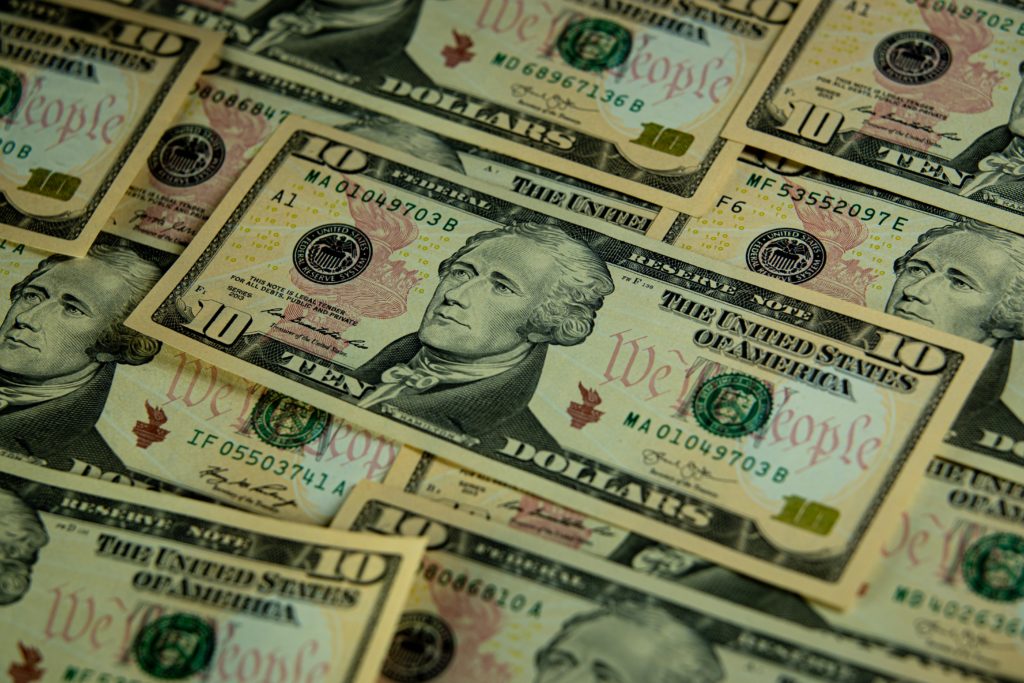The June 2022 inflation numbers have not yet been released but in May 2022 consumer prices were up 8.6% from May 2021. The tax advantages that come with a Solo 401k can be a hedge against inflation. At least as far as inflation relates to building your retirement wealth. A big part of it is the power of compounding money or compounding interest. There were seven federal tax brackets for the 2021 tax year: 10%, 12%, 22%, 24%, 32%, 35% and 37%. With a tax-deferred Solo 401k, depending on your tax bracket, this is how much additional investment money you can have available each year to begin compounding your retirement nest egg. All that compounding money is working in favor of your wealth as well as being a hedge against inflation by counteracting the effect inflation will have on your retirement funds.
Albert Einstein once said “Compound interest is the eighth wonder of the world. He who understands it, earns it; he who doesn’t, pays it.”
What Inflation Means to Investors
With a Solo 401k, you start with a larger investment due to the tax savings. However, inflation can chip away at your investments. Inflation increases the price of goods/services while decreasing the value of your dollars. Relative to investing, it is best to think in terms of the possibility of decreasing the value of your invested dollars. Assets with fixed, long-term cash flows tend to perform poorly when inflation is rising, since the purchasing power of those future cash flows falls over time. Conversely, assets with adjustable cash flows (e.g., property rental income) tend to perform better as a hedge against inflation.
Savings. Ultimately, your retirement investment account is a form of savings for your retirement years. When you’re working, your investment earnings should keep pace with inflation. When you’re living off your savings, as in retirement, inflation diminishes your buying power. It’s important to factor inflation into your retirement planning to ensure you have enough assets to last through your retirement years. Keeping your retirement funds in a saving account paying 1% or 2% is not going to get you where you want to be.
Investor anxiety is high. Inflation is at record levels. What can investors do as a hedge against inflation? Understandably, investors feel uncertain about their investment portfolio against the backdrop of elevated stock and bond volatility, steep year-to-date losses, and an economic environment that remains highly uncertain. Here are a few good strategies for investors to keep in mind as we move through these inflationary times:
- Maintain a properly diversified portfolio that includes alternative investments.
- Explore new strategies in the alternatives space to help mitigate stock risk.
- Maintain discipline, utilize a systematic dollar-cost averaging approach, and incorporate intelligent drawdown strategies for those in retirement.

Fixed income investments. The closer they are to retirement the more most people will shift their investing strategy towards bonds, treasuries, and CDs because they want a stable income stream in the form of interest payments. However, since the rate of interest remains the same on most fixed income securities until maturity, the purchasing power of the interest payments declines as inflation rises. Fixed income investments are not generally a good hedge against inflation for active investors.
Stock investments. Historically, U.S. stocks have tended to rise in price somewhat when inflation is accelerating, though the relationship is not strong and certainly not at all strong today. In reality, stocks are not an effective investment tool in more robust inflation environments.
Real assets. These are physical assets rather than paper documents that represent an investment in stocks and bonds. In particular, real estate tends to be a strong hedge against inflation. Property owners can typically increase rent payments when prices of goods and services are rising. Property values also tend to rise faster than inflation.
Inflation might be beyond your control, but that doesn’t mean you can’t take action to help preserve your investments from its effects. An important way that investors benefit from a Solo 401k is through the ability to make alternative investments such as real assets.
Some Ways a Solo 401k Hedges Against inflation
Inflation is not good but it’s not as bad for Solo 401k investors as it is for most people. The ability of a Solo 401k to invest in alternative investments creates a unique ability to hold inflation-resistant investments. For stock and bond investors, inflation is a problem because these do not systematically adjust for inflation. That handwriting is on the wall as we clearly see the stock and bond markets in turmoil during these times of high inflation.
A Solo 401k is not immune from the effects of inflation. But it does have the ability to work harder to keep pace with inflation. Your specific investment strategy as a hedge against inflation can depend on how close you are to retirement and what overall type of investing strategy you have been pursuing.
Real estate investing as a hedge against inflation
Real estate often provides an attractive inflation alternative, as rents and property values are highly correlated with rising consumer prices. Today’s inflation is partly due to an economy running at full speed, increasing the demand for real estate, and driving rents upward. Real estate should be considered a strong hedge during demand-driven inflation.
Real estate has a well-established history as a hedge against inflation. Primarily because property values and rents both go up with inflation. The numbers change, but as of February the average rent in the United States was about $1,900 a month, an increase of nearly $300 over this time last year — and that’s the average. Some cities like Miami have seen a 40% year-over-year increase in rents. You can also think of low-cost housing as one of the best hedges against inflation because people always need shelter. Entry-level and affordable homes also tend to be recession-resistant as well as inflation-resistant. This makes it a good hedge for any swing that the economy might take.
The Private Investor Takes Control
Investing in private companies with the ability to increase prices or reduce costs to keep pace with inflation can be the right hedge against inflation as an alternative asset in your portfolio. Medium to small-sized businesses is nimbler at reducing costs such as overhead. Some ways they do this are by reducing inventory, making do with fewer workers, and reducing marketing costs. They may even have the ability to relocate to a less expensive workplace. Additionally, businesses with high pricing power will outperform because they have the ability to defend their margins by passing on the higher costs to customers. There are also companies that are less affected by major inflation sources such as energy, supply chain disruptions, and rising labor costs. Ideal opportunities are companies that have a combination of cost control, customer retention, low capital needs, and income growth characteristics. The good news: investments in these capabilities will benefit a business’s performance in any environment.
Warren Buffett once said that an unregulated toll bridge would be the ideal asset to own in an inflationary world because you would have already built the bridge and could raise prices to offset inflation. “You build the bridge in old dollars, and you don’t have to keep replacing it,”
How a Roth Solo 401k Fights Inflation Even Better
If you’ve been giving thought to a Roth Solo 401k, now might be the time to make that decision.
As a practical matter, most people have the majority of their retirement savings in pre-tax 401k accounts. Having money in a Solo 401k is not a bad thing. However, a pre-tax 401k involves tradeoffs. Primarily an upfront tax deduction is a benefit in exchange for future taxation when the money is withdrawn. That also makes having money inside a pre-tax retirement account subject to future tax inflation. Some of the future growth in a traditional retirement account is likely to be attributable to inflation, and thus there will be tax inflation. Keep in mind that there is no inflation adjustment when it comes to the taxation of tax-deferred withdrawals.

With a Roth 401k, you pay the taxes before your investment grows along with inflation. At the time of a qualified withdrawal, all of your investment growth (and original investment) is tax-free. At least part of that growth is attributed to inflation. While a Roth Solo 401k does not directly help with inflation, it does help reduce the tax burden on the money you earn within that account, which can help offset the impact of inflation when you withdraw funds.
With a Roth Solo 401k plan, you will pay taxes at your current tax rate but have tax-free withdrawals during retirement. You must hold the account for at least five years and take withdrawals only after age 59½. It could be a game-changer considering how much these earnings could add up over the next two or three decades.
The Nabers Group offers a hybrid approach. The Solo 401k comes with a Roth Solo 401k subaccount. This gives you the flexibility to adjust your tax burden on a yearly basis. Possibly by starting with a 50-50 approach.
What Should You Do Today About Your Retirement Tomorrow?
First, consider maintaining or increasing your contributions. When prices are rising and your paychecks don’t go as far, it’s tempting to pull back on contributions to your Solo 401k or other retirement accounts. Even in times of inflation, it remains important to contribute so that your money will continue to grow. Having tax-advantaged contributions working for you during inflationary times has a very worthwhile payoff when retirement arrives, and contributions stop. If possible, you may even consider raising your contribution rate so that more of your money is going into your plan. With a Solo 401k, for 2022, you can contribute up to $61,000. There is also a catch-up contribution of an extra $6,500 for those 50 or older.
When inflation is speeding up, one of the best things you can do with your retirement account is to diversify your investments and minimize fees.
Solo 401k Loan Feature as a Protection Against Inflation
One more thought about how a Solo 401k can help during inflationary times. Due to rising interest rates on credit cards and other debt due to Federal Reserve rate hikes, and the heavy financial burden inflation places on individuals, some people are turning to their Solo 401k loan feature as a way of addressing increasing costs.

A Solo 401k participant can borrow up to either $50,000 or 50% of their account value – whichever is less. This loan must be repaid over an amortization schedule of 5 years or less with payment frequency no less than quarterly. Currently, the lowest interest rate that can be used is Prime, which is now at 4.0%. The payments plus interest are returned to your Solo 401k account tax-free and penalty-free. There are no penalties or taxes due provided loan payments are paid on time. The loan can be used for any purpose. A Solo 401k loan can be used to help pay for increased personal or business expenses as a result of rising prices or for any other reason.
Set Up Your Self-Directed Retirement Plan and Start Investing In Alternatives
Is there a perfect answer to inflation? No. But with some intentional planning today, you can reduce their exposure to the harmful effects of future inflation. Investing through a Solo 401k or Roth Solo 401k can be the best way to build wealth over time, especially if you’re able to max out your plan.
Ongoing fluctuations in the stock markets along with a breakdown of investor confidence in corporate America are driving the demand for alternative investments with greater choice for retirement accounts. Investors now realize they can hedge against inflation or recession by making alternative asset investments using their retirement accounts.
Setting up a Solo 401k retirement plan is easy and allows for tax-advantaged contributions much larger than an IRA or employer 401k. Importantly, it puts you in control.






2 Responses
Investments may be impacted by inflation, but great investors have a hedge against it. You will gain all the knowledge and awareness you can imagine from this piece.
Thank you! We agree 100%